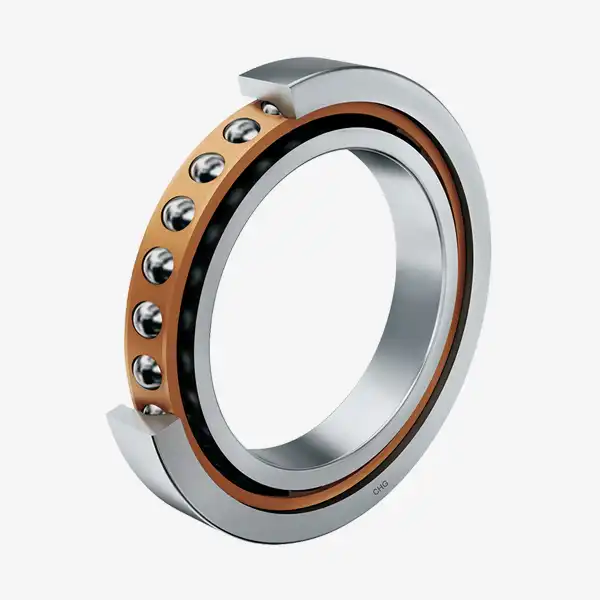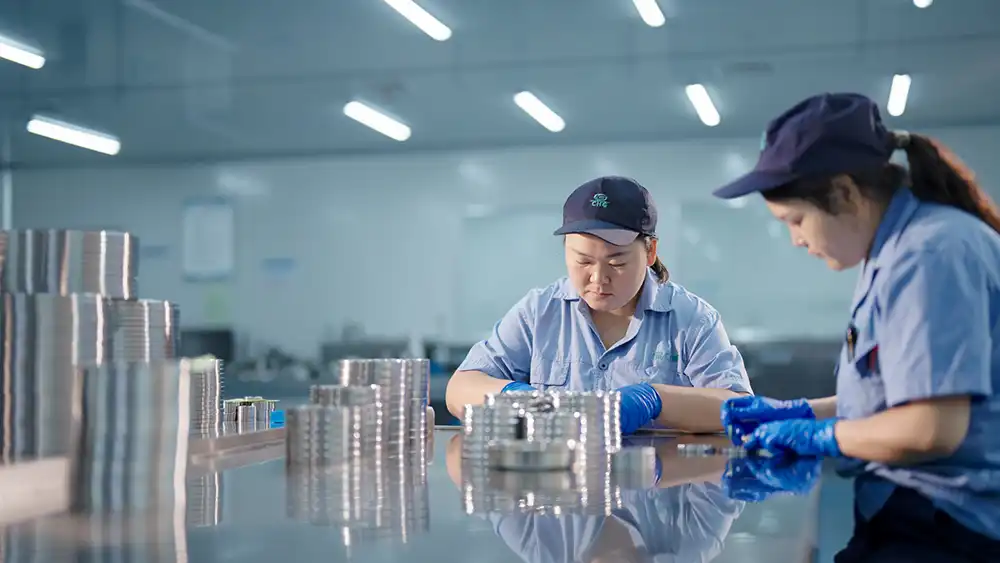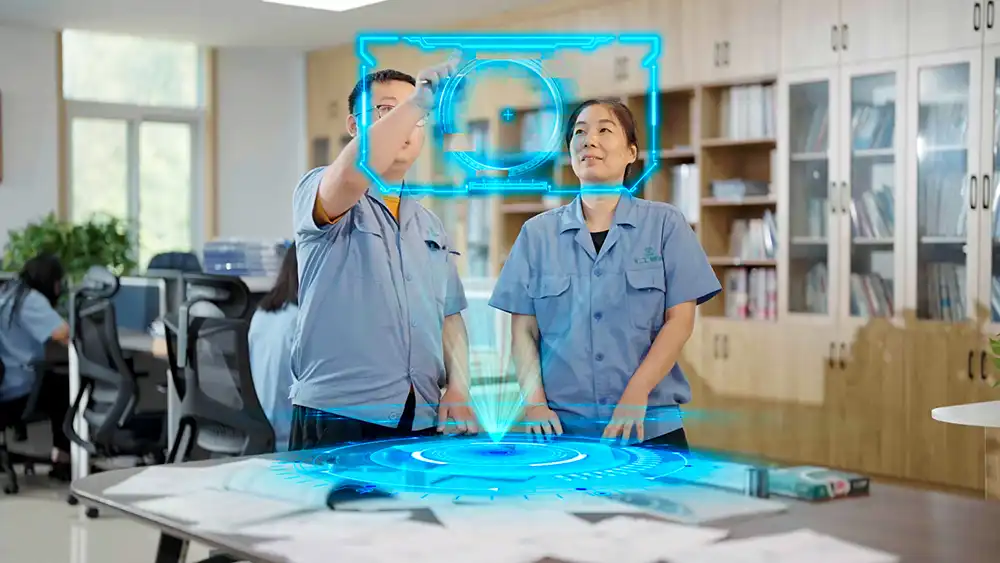How Does a Precision Angular Contact Ball Bearing Work?
Precision angular contact ball bearings represent a sophisticated advancement in bearing technology, designed to handle both radial and axial loads simultaneously. These specialized bearings feature raceways in the inner and outer rings that are displaced relative to each other in the direction of the bearing axis, creating an optimized contact angle that enables them to support complex loading conditions. The unique design allows for higher speed capabilities while maintaining precision and reliability, making them indispensable in applications requiring exact positioning and high rotational accuracy.

What Makes Angular Contact Ball Bearings Different from Other Bearing Types?
Precision Angular Contact Ball Bearings stand apart from conventional bearing designs through several distinctive characteristics that enhance their performance and versatility. At the heart of their design is the contact angle, which represents the angle between the line joining the points of contact of the ball and raceways in the radial plane, and a line perpendicular to the bearing axis. This fundamental feature enables these bearings to handle combined loads more effectively than standard deep groove ball bearings.
The internal geometry of angular contact bearings is precisely engineered to create optimal ball-to-raceway contact. The raceways are specifically designed with different curvature centers, resulting in an asymmetrical load path through the bearing. This asymmetry is intentional and creates a contact angle that can effectively manage axial forces in one direction while still maintaining excellent radial load capacity. The balls are typically held in position by a precision-machined cage or retainer, which ensures proper spacing and reduces friction between adjacent balls.
Furthermore, these bearings often incorporate advanced materials and surface treatments to enhance their performance characteristics. High-grade bearing steels, such as AISI 52100 or M50, are commonly used due to their excellent hardness, wear resistance, and dimensional stability. The surface finish of the raceways and balls is manufactured to extremely tight tolerances, often achieving roughness values of less than 0.1 micrometers, which helps minimize friction and wear while promoting smooth operation.
The preload capability of angular contact bearings also sets them apart. Through careful selection of internal clearance and mounting arrangements, these bearings can be preloaded to eliminate internal clearance and increase rigidity. This feature is particularly valuable in applications requiring high precision, such as machine tool spindles, where minimal shaft deflection and maximum accuracy are essential.

How Do You Select the Right Contact Angle for Your Application?
Selecting the appropriate contact angle is a critical decision that significantly impacts Precision Angular Contact Ball Bearing performance and longevity. The contact angle, typically ranging from 15 to 40 degrees, must be carefully chosen based on the specific requirements of the application, including speed, load conditions, and precision requirements.
For applications primarily dealing with radial loads but requiring some axial capacity, contact angles in the 15-25 degree range are often optimal. These moderate contact angles provide a good balance between radial and axial load capacity while maintaining relatively high speed capabilities. They're particularly well-suited for applications such as electric motors and pumps where radial loads predominate but axial forces need to be accommodated.
Higher contact angles, typically 25-40 degrees, are better suited for applications with significant axial loads or where maximum rigidity is required. These larger angles provide enhanced axial load capacity and increased stiffness, though usually at the expense of some speed capability. Machine tool spindles, for example, often utilize bearings with higher contact angles to maintain precision under heavy cutting loads.
The selection process must also consider factors such as operating speed, temperature, lubrication requirements, and mounting arrangements. Higher speeds generally favor smaller contact angles due to reduced friction and heat generation. The bearing's speed rating decreases as the contact angle increases because larger angles result in more sliding contact between the balls and raceways.

Temperature considerations are equally important, as thermal expansion can affect bearing clearance and preload. Applications with significant temperature variations may require special attention to maintaining proper preload across the operating temperature range. Some designs incorporate special materials or coatings to help manage thermal effects.
What Are the Key Maintenance Requirements for Angular Contact Ball Bearings?
Maintaining Precision Angular Contact Ball Bearings requires a systematic approach to ensure optimal performance and extended service life. Proper maintenance encompasses several critical aspects, including lubrication management, monitoring techniques, and preventive maintenance procedures.
Lubrication is perhaps the most crucial aspect of bearing maintenance. The correct type and quantity of lubricant must be selected based on operating conditions, speed, and temperature. High-speed applications typically require oil lubrication or oil-air systems to provide adequate cooling and lubrication while preventing excessive heat generation. Lower speed applications may be adequately served by grease lubrication, though the grease type and relubrication intervals must be carefully selected.
Regular monitoring of bearing condition is essential for preventing unexpected failures and optimizing maintenance intervals. This can include vibration analysis, temperature monitoring, and periodic inspection of lubricant condition. Modern maintenance programs often incorporate condition monitoring systems that can detect early signs of bearing wear or damage, allowing for planned maintenance rather than emergency repairs.
Cleanliness is paramount in maintaining precision bearings. Contamination from dirt, moisture, or wear particles can rapidly accelerate bearing wear and lead to premature failure. Proper sealing arrangements must be selected and maintained to prevent contamination ingress. Regular inspection and replacement of seals, as well as proper handling procedures during maintenance, are essential for maintaining bearing cleanliness.
The mounting and dismounting procedures also play a critical role in Precision Angular Contact Ball Bearing maintenance. Proper tools and techniques must be used to prevent damage during installation or removal. This includes the use of appropriate heating methods for mounting, proper alignment procedures, and careful attention to cleanliness during all maintenance operations.
Luoyang Huigong Bearing Technology Co., Ltd. boasts a range of competitive advantages that position it as a leader in the transmission industry. Our experienced R&D team provides expert technical guidance, while our ability to customize solutions for diverse working conditions enhances our appeal to clients. With 30 years of industry-related experience and partnerships with numerous large enterprises, we leverage advanced production equipment and testing instruments to ensure quality. Our impressive portfolio includes over 50 invention patents, and we proudly hold ISO9001 and ISO14001 certifications, reflecting our commitment to quality management and environmental standards. Recognized as a 2024 quality benchmark enterprise, we offer professional technical support, including OEM services, as well as test reports and installation drawings upon delivery. Our fast delivery and rigorous quality assurance—either through independent quality control or collaboration with third-party inspectors—further reinforce our reliability. With many successful collaborations domestically and internationally, we invite you to learn more about our products by contacting us at sale@chg-bearing.com or calling our hotline at +86-0379-65793878.
References
1. SKF Precision Bearings Catalog (2023). "Technical Principles of Angular Contact Ball Bearings"
2. NSK Technical Report (2022). "Advanced Bearing Technologies for High-Speed Applications"
3. Timken Engineering Manual (2023). "Selection and Maintenance of Precision Bearings"
4. JTEKT Corporation Research Paper (2022). "Contact Angle Optimization in Precision Bearings"
5. FAG Schaeffler Technical Guide (2023). "Bearing Maintenance Best Practices"
6. NTN Technical Review (2022). "Innovation in Angular Contact Bearing Design"
7. IKO Bearing Engineering Journal (2023). "Precision Bearing Applications and Performance"
8. Applied Mechanics Reviews (2022). "Advanced Analysis of Ball Bearing Dynamics"
9. Journal of Tribology (2023). "Lubrication Systems for High-Performance Bearings"
10. Mechanical Engineering Science (2022). "Modern Approaches to Bearing Maintenance"

